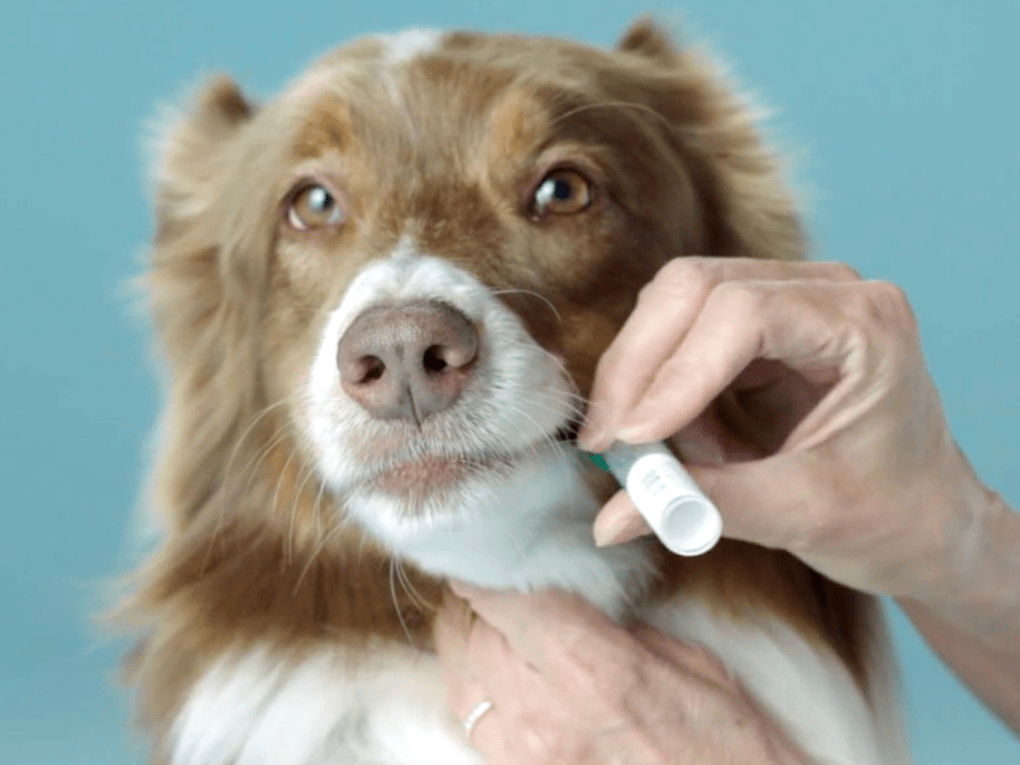What is the most accurate dog DNA test? The answer to that question depends on a few different factors, like what technology the test uses, how much genetic information is captured in the results, and more. Embark is proud to offer the most accurate dog DNA test on the market today.
But how can you tell which dog DNA test is most accurate? We break down the factors that go into accuracy. Here’s what to look for when you’re searching for the most accurate dog DNA test.
Table of contents
What makes Embark the most accurate dog DNA test?
Embark offers the most accurate dog DNA test on the market, with 99% breed ancestry accuracy. We test for 400+ breeds, types, and varieties, including dingoes, coyotes, wolves, and village dogs—in fact, we’re the only dog DNA company that can do that.
In addition to having the most accurate dog DNA test for breed mix, we’ll be transparent in our results. If a percentage of your dog’s breed mix doesn’t match any breeds in our database, or if it’s too small a percentage for us to be sure that it’s accurate, we’ll tell you. Other dog DNA tests may show other breeds in your dog’s results to make up that small percentage—breeds that may or may not actually be present.
The most accurate dog DNA test uses advanced technology
The accuracy of a dog DNA test depends in part on the technology it uses.
Our commitment to science is at the heart of everything we do. We use a research-grade genotyping chip, called a “microarray,” to look at your dog’s DNA. It’s the same kind of technology used for human genetic research and trusted by companies like 23andMe, so you can trust that it’s reliable.
Scientists have used microarray chips (also called “SNP chips”) for over 15 years. As a genetic testing platform, microarrays are extremely accurate.
For Embark Dog DNA Tests, the base technology is not a secret. Our microarray is based on the well-established Illumina CanineHD microarray, developed by the Broad Institute and others, and we’ve added some custom markers for health and traits.
Here are a few of the things we do to make sure that we offer you the most accurate dog DNA test:
- Each health condition is tested multiple times. That redundancy helps us have confidence that we got it right. If the test gets different results for that gene, our scientists review it manually to see what’s going on.
- When we upgrade our test to a new version, we test it on known dog DNA to make sure it calls the same dogs correctly multiple times.
- We manually review our results periodically to make sure there are no inconsistencies, which enables us to catch and fix anything that might be misbehaving.
- We have quality control processes in place to make sure dog DNA samples don’t get mixed up. By double and triple checking the breed, sex, and relatives for every sample, we make sure that each DNA sample is tied to a unique dog.
- We catch contamination at the start of our DNA analysis. If that happens, we’ll send you a new swab.
You can read more about dog DNA testing in this deep dive into microarray technology.
The most accurate dog DNA test meets rigorous quality standards
Our processing laboratory is ISO– and CLIA-certified. These are the same quality standards that human DNA testing labs meet.
Our scientific and laboratory teams follow rigorous quality control processes. We label each dog DNA sample with a unique barcode, which prevents sample mixup. Our use of microarrays exceeds industry quality control standards by also checking the breed, sex, and relatives of every sample. This also helps to prevent fraud by making it impossible for the same dog to be tested multiple times.
We use robots to handle the samples in the lab, minimizing risk of human contamination. If there’s any contamination, our process detects it early and flags the contaminated sample. If that happens, we’ll send you a new swab, free of charge.
As we’ve grown, we’ve continued improving our quality control processes. In the rare case that the results of the probes testing the same gene don’t match, we double-check the results with a secondary analysis conducted by two independent geneticists. We make sure the conclusions of both geneticists must align before we deliver the final result.
At Embark, we’re proud of our world-class DNA testing service, our customer support team, and the most accurate dog DNA test on the market today. As technology advances and scientists make new discoveries, we’re constantly adding to our dog DNA tests to make sure that we use the latest, most accurate scientific information.
Common questions about dog DNA test accuracy
Let’s break down some of the common questions about why a dog’s genetic breed mix can sometimes be surprising.
1. Why don’t my dog’s breed results match what they look like?
Even though a dog might look a lot like a specific breed, genetics can tell a different story.
Keep in mind that the vast majority of DNA doesn’t code for proteins, but it does tell us about ancestry. When we report your dog’s breed mix, we look at the total of your dog’s DNA.
That doesn’t mean that the most visible traits (like coat color, snout length, or body size) all come from your dog’s dominant breed. Some of those traits might come from a breed that makes up only 10% of your dog’s overall breed mix, but those are the traits we see. Your dog might be 50% Poodle, but not look anything like a Poodle (like Bernyk the Yellow Lab).
Your dog looks the way they do not because of averaging or blending the breeds in their genetic makeup, but because of specific traits coded by specific genes. A lot of the traits we associate with just one specific breed are related to variants that can show up in any breed. Some traits are controlled by a single gene. For example, if your dog inherits the genetic variant for a long muzzle from their Collie side, but their genetic ancestry is only 10% Collie, your dog will look a lot more like a Collie than their DNA says they are.
Breed identification can be surprising, but that doesn’t mean it’s inaccurate. In this article, Embark cofounder Dr. Adam Boyko explains why your dog’s genetic breed results might not be what you expected.
2. What is a “Supermutt”?
You might be surprised to receive your dog’s breed results and find that a percentage of their breed ancestry comes from “Supermutt.” But what exactly is Supermutt?
“Supermutt” might seem nonspecific, but there is a real scientific reason behind it. “Supermutt” means that a dog has ancestry from multiple different breeds, but the amount of DNA inherited from those breeds is very small. In those cases, it turns out that the DNA segment is so small that it can no longer be confidently assigned to any one particular breed. This happens when dogs descend from several generations of other mixed-breed dogs.
3. I have a purebred dog, but their DNA results reported another breed in their ancestry. Is your test wrong?
Genetic ancestry and purebred status are two different things. A dog’s “purebred” status is defined by their pedigree and determined by a registration body. A purebred dog has purebred parents that meet the breed standards for that breed. Those breed standards often include visual requirements, like certain traits, as well as behavior and temperament.
Breed ancestry, on the other hand, is determined by looking at your dog’s DNA and seeing how much DNA they share with other breeds. The more shared DNA, the higher the percentage of that breed in their breed mix.
If a dog’s DNA test results are 100% one breed, we call that “single breed.” Single breed refers to a dog’s DNA, whereas “purebred” refers to a registered status.
Therefore, a dog that was thought to be mixed breed can turn out to be “single breed,” but that doesn’t mean they are a purebred dog. Vice versa, a purebred dog’s DNA test might say they have a small percentage of ancestry in another breed, but that doesn’t invalidate their purebred status.
Want to learn more about what DNA testing means for purebred dogs? We debunk common myths about purebred dog DNA tests.
Accurate genetic health screening results
Embark gives you accurate results about inherited risks so you can have peace of mind about your dog’s health. We test for 270+ genetic health risks that affect multiple breeds, with a very low rate of false positives and false negatives, so you can trust the results.
In genetic testing, a false positive means that a test result says that your dog has a health risk when they really don’t, which can cause unnecessary worry for you and your veterinarian. A false negative means that the test didn’t detect a health risk that your dog actually has. That causes false confidence and a missed opportunity to catch it early.
It’s important to talk to your veterinarian about any genetic health risks your dog might have. Just because your dog has a genetic health risk doesn’t necessarily mean they’ll develop a disease. A specific genetic variant might have very little effect in one breed and a significant effect in another breed. By knowing your dog’s breed mix, as well as their genetic health risks, you and your veterinarian can develop a care plan tailored to your dog’s unique needs.
Get started with the most accurate dog DNA test
Learn more about how dog DNA testing works or read about Embark to see how we’re different from the competition.
















